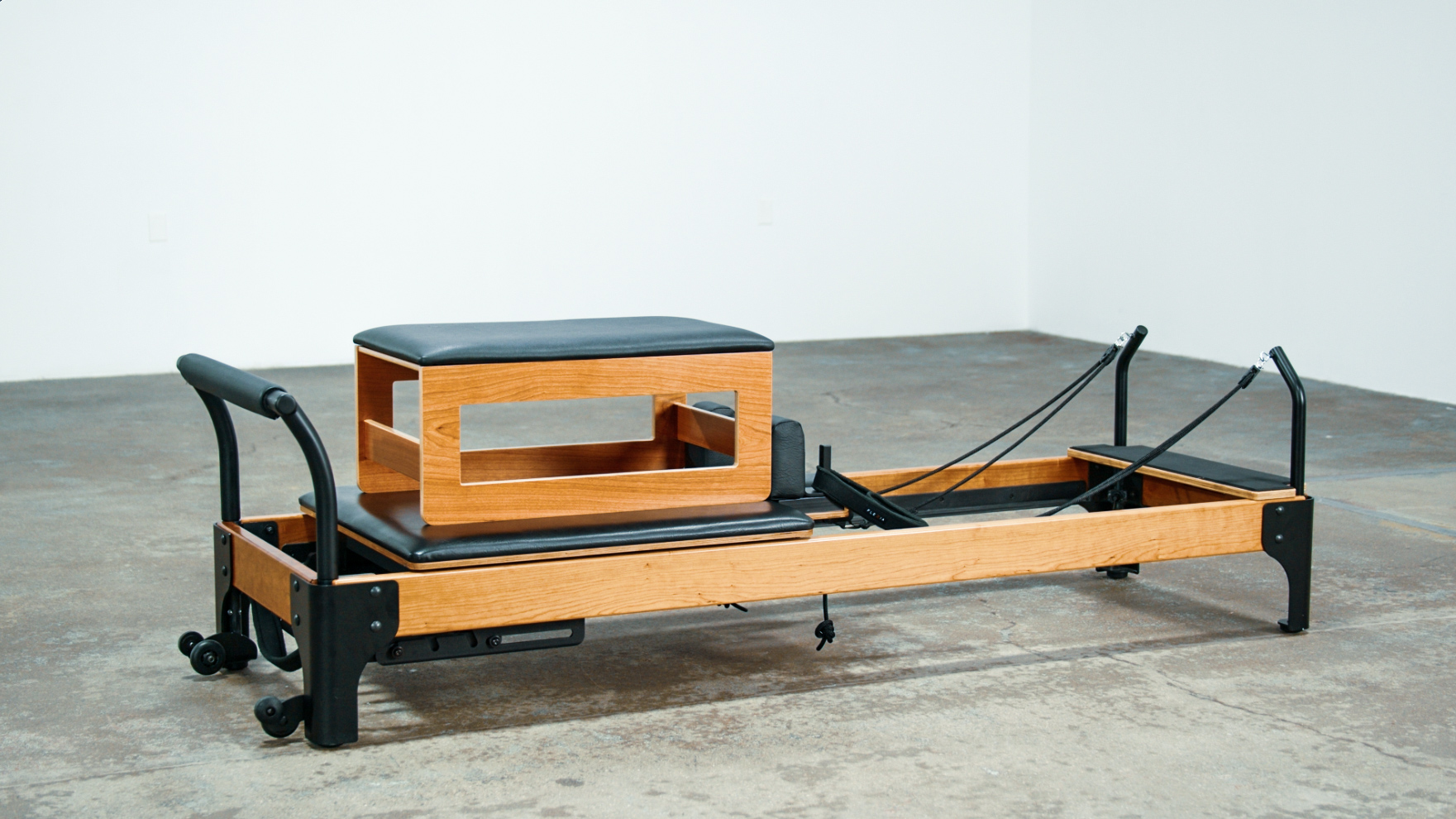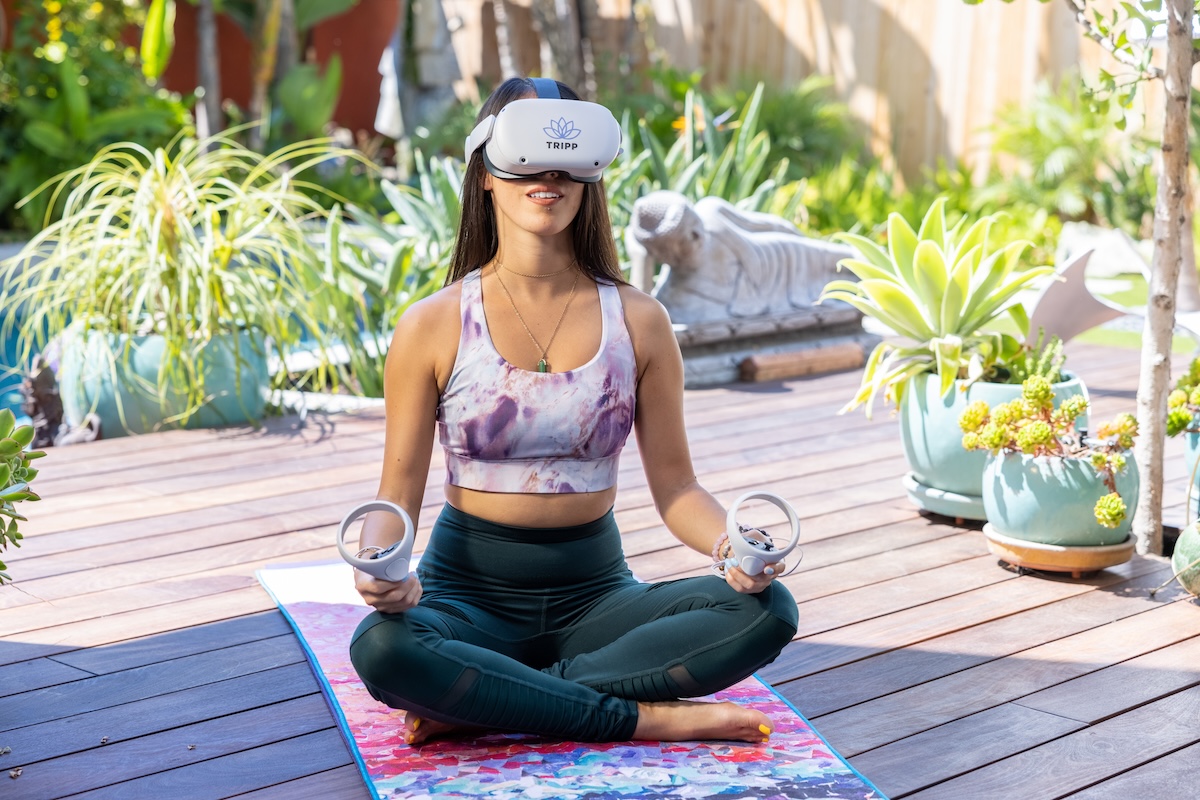Startup Q&A is an interview series showcasing health, fitness, and wellness companies.
In this Q&A, you’ll hear from Kaleen Canevari, founder & CEO of Flexia, makers of a connected Pilates reformer. Kaleen discusses how her experience as an instructor led her to bring the reformer Pilates experience to the home with AI and machine learning. She also details how quantified metrics will unlock a new subset of Pilates enthusiasts.
Can you tell us about what you’re working on at Flexia?
Kaleen Canevari: Flexia helps you improve strength, flexibility, and mindfulness through Pilates with our smart reformer and online studio.
The Flexia Reformer is professional-grade and equipped with first-of-its-kind, patent-pending technology that gives you real-time feedback and tracks your progress, all from the comfort of your home. It’s paired with an online studio featuring unlimited, on-demand classes at a variety of skill levels, with each session led by dynamic instructors to give you the exact support and motivation your body needs.
Pilates on the reformer is one of the few exercise modalities that can combine resistance training with elements of mindfulness through breath and body awareness. It’s accessible for people with chronic pain, injuries, or mobility limitations, and its controlled, low-impact movements make it great for cross-training.
The experience a professional-grade reformer delivers is a key reason why people fall in love with Pilates, however, they are expensive, intimidating, confusing to use, and often don’t fit in a home or accommodate varying body sizes. Plus, instructor-driven feedback on form is critical to getting the most out of a Pilates workout.
Until Flexia, reformer-based Pilates was challenging to access outside of a studio setting.
Additionally, bringing AI and machine learning to the Pilates experience is impactful not just for the ability to bring it into the home. Before now, exercise on a reformer has never been able to be quantified.
Unlike in traditional strength training, for example, where you can track the total amount of weight moved for each exercise, traditional Pilates reformers use extension springs to provide resistance, which means that an exact load moved cannot be determined. This can make it really hard to stay motivated and recognize improvements without an instructor saying so.
See, most people are so disconnected from their bodies that, without a number, it’s hard to recognize what they’re feeling.
Our ability to merge traditional fitness metrics that people are familiar with—like repetitions and weight—with metrics relating to flexibility, quality of movement, and control will change the way that people experience mindful movement and reconnect with their bodies.
How did you come up with the idea? What key insight led you to pursue this opportunity?
KC: I created this company, in large part, because I kept trying to get my mom to fall in love with Pilates. But even after five years of trial and error, it still just wasn’t happening.
As a health-conscious outdoors-lover, she has been focusing heavily on ensuring she can maintain her athletic ability as she ages into retirement so that she can enjoy life as long as possible. She has 100% bought into the belief that Pilates is good for her. However, her main three challenges with Pilates had nothing to do with it being effective.
She never found a local instructor that she connected with, trying instructors as far as a 45-minute drive away. She’s very budget-conscious, too — adding $30 or more per group class ($240 or more per month) in fees to work out just didn’t mesh with how she envisioned spending her money.
Finally, she wants to see her progress, and it was hard for her to really feel the progress herself or take her instructor’s word for it. She wanted numbers like her Peloton gave her.
I knew my mom wasn’t the only person who had these challenges. I spent years teaching Pilates and advising people on what reformer would be best for them to use in their homes, and there weren’t any good options. Most reformers were difficult to set up, use, and store.
Even if they were able to find a reformer to use at home, the online studios didn’t use the same reformer as them, which made it difficult to take a class, know which spring settings to use, and know if they were doing the exercises correctly.
I knew there was a need for a type of reformer that didn’t exist yet — one that was intuitive to set up, adjust, and use in-home without a physical instructor present. My nerdy mechanical engineer brain knew that technology was key and would revolutionize mindful movement practices.
So, I designed and built The Flexia Reformer, a smart reformer equipped with sensor technology to provide information about how well you were performing an exercise, measure your range of motion, and track your progress over time.
How did you turn your idea into a company?
KC: I knew I had a good idea, but to prove it, I ran a self-hosted deposit sale in 2020 before taking on any investment.
The marketing was simple: I posted about these problems to social media and told people that I had created a solution with a reformer that was designed specifically for in-home use. We also ran a small number of Facebook ads. This sale generated $140K in pre-sales in just 19 days, all on $500 of non-optimized spend. And we didn’t even have a prototype yet!
After our initial pre-sale, I finished the design of the reformer and built the first one. At the same time, I recruited my co-founder David Ducrest, who began working part-time on developing the online studio and integrating the sensor technology.
We started interviewing for the Techstars Sports Accelerator (2021), and then I hired CJ, a Pilates colleague of mine, for a website redevelopment project. She eventually become our third co-founder.
While in the Techstars accelerator, we raised $420K, hired our next two employees, filmed more content for our online studio, and figured out how to mass-produce the reformer itself.
Coming out of Techstars in the fall of 2021, we raised a $4M seed round led by ADvantage Sports Fund, an early-stage VC fund investing in tech companies shaping the future of sports, fitness, health, and gaming. The round also included participation from strategic investors like Phoenix Capital Ventures, Techstars, and Calm Ventures.
Our first units were delivered in late 2021, and our community of raving customers continues to steadily grow.
How big can this get? What’s the addressable market and how do you go about capturing it?
KC: Flexia straddles not just digital fitness—a $59B market—but mindfulness and recovery tech, too. Pilates itself is a $2.4B market in the US alone and has more participants than boxing and swimming — and nearly as many as rowing.
Pilates is amazing for its ability to provide so many different things to so many different people. Clients walk into Pilates studios all over the world seeking a hard workout… and getting one.
Some want to build strength, cardio, or flexibility. Others want to rehab an injury, restore motion lost to a neurological condition, or—as often happens—people feel that they’ve tried everything else and it’s the last resort to feeling better in their body. Whatever their motivation, Flexia can help them reach their goals.
It’s not just about fitness; it’s about wellness. In this aspect, Flexia stands apart from other connected Pilates companies. While the others focus is on high-intensity, entertaining fitness, our focus is on facilitating a successful, personalized movement experience for every client.
Our technology allows us to guide the user, from their very first session, to success. This is critical not just for anyone new to Pilates — it’s particularly important for people who find traditional fitness (hardcore and high-adrenaline) unappealing or inaccessible.
Who is the core customer? How are you acquiring customers? And how will you grow the customer base?
KC: Our first target customers are women ages 45–65 who have done Pilates before.
A study performed by the Pilates Method Alliance (PMA) found that the majority of current Pilates participants are female, aged 45–64, and have an annual household income of over $75,000. And since women make 83% of all buying decisions in the US, we think this is an ideal place to be.
Over time, we will broaden our target demographics to include people of all ages and activity levels, including the growing involvement of men in Pilates. Pilates on a reformer is a well-known training secret to many of the world’s top athletes, so in the future, we plan to leverage strategic partnerships with professional sports teams and athletes.
Looking at your road map, what are some of the milestones you’re targeting over the next 3-6 months?
KC: Over the next six months, we’re focused on growing our user base, expanding the content library, and releasing key features for our customers including real-time spring recommendations, after-class report cards, and smart recommendations based on user goals and past performance.
Anything else you’d like to share with readers?
KC: Here at Flexia, we care about how our customers feel in their bodies. We, as a society, are living longer but aging faster. Technology is often seen as one of the main contributors to disconnecting from our bodies and eliminating the need to move as much throughout the day.
However, we believe Flexia’s technology will help people build strength and flexibility, reconnect with their body, and feel unstoppable.
Related reading from Fitt Insider:
Peloton of Pilates: High-tech Reformers Have Arrived
If you’re interested in having your company featured in our Startup Q&A series, send an email to team@fitt.co.
 Flexia
Flexia


